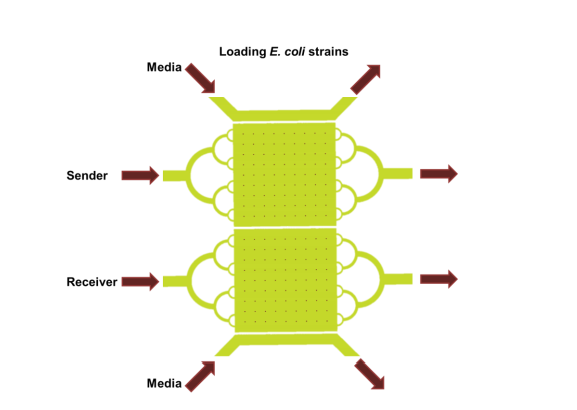 University of Tennessee at Knoxville Doctoral student, Peter Golden Shankles, presents his dissertation on ‘Interfacing to Biological Systems Using Microfluidics,’ discussing the popular new field of microfluidics and the 3D printed tools that are propelling it forward—for this project and numerous others recently too. 3D printing allows for much greater self-sustainability in the lab as researchers can create tools for experiments and chemical reactions on their own, but attention must also be paid to how such technologies affect chemical transformations and influence biological systems.
University of Tennessee at Knoxville Doctoral student, Peter Golden Shankles, presents his dissertation on ‘Interfacing to Biological Systems Using Microfluidics,’ discussing the popular new field of microfluidics and the 3D printed tools that are propelling it forward—for this project and numerous others recently too. 3D printing allows for much greater self-sustainability in the lab as researchers can create tools for experiments and chemical reactions on their own, but attention must also be paid to how such technologies affect chemical transformations and influence biological systems.
As microfluidics are used more frequently with cell-free protein synthesis systems (CFPS), researchers usually set up tubes to experiment with reactions. As the author points out, this is usually easy, but other studies have shown better success with ‘engineered reaction hardware.’ In this study, the researchers aim to begin using microfluidics as well as nanoscale membranes to lessen distances in diffusion and maintain reactions longer with better addition of microfluidics and nanoscale membranes. Success in such research could make impacts in applications such as medicine, when mixing doses of medicine.
Researchers involved in microfluidics have begun to use 3D printing due to the ease in creating components, quickly, and with exponential reduction in production cost. Availability of 3D printers has made a big difference, along with the affordability quotient, but more improvements must be made. FDM 3D printing has also been behind the creation of devices without the need for molds. 3D printed microfluidics are also popular mechanisms in bioprinting today, with the use of hydrogels used in tissue engineering.

3D microfluidics. Using 3D capabilities of the feature-based software, bridges were printed to create an overlapping design with three channels from an offset (a) and side (b) view. (d)Top view – overlapping channels remain separate from one another. (c) Side view – the bridging structure raises off the plane of the glass slide. The expanded view shows the printing direction for the bridging structures. (e) The microfabricated structure along with an inset of the chambers with each channel independent of one another. (f) Shows 3D printed structures connecting channels and overlapping to simplify the device control.
“The field of 3D printed microfluidics is growing to the point that substantial biological discoveries have been made with printed devices along with providing a path to commercialization for microfluidics that is simpler than PDMS based approaches,” says Shankles. “Most plastics used in 3D printing can be injection molded, providing a more straightforward road to commercialization than other techniques.
“Within microfluidics there are a plethora of techniques available to scientists and engineers so that the focus can be returned to biology and answering questions that are out of reach for traditional techniques.”
Shankles makes the obvious point that researchers should understand the proper ‘aspect of nature’ to copy for success in microfluidic platforms, along with realizing that current assays often require more than interactions with just one measurement of density or biochemical activity—and even the most basic systems may require more complicated setup than initially realized; however, Shankles does see the new 3D printing breakthroughs as offering potential for the future.
“The platform introduced here provides a route to expanding co-culture studies and building upon genomic studies to verify proposed interactions in a tractable way that preserves quorum sensing 70 behaviors while providing resources to more deeply understand the effects of chemical communication between species and communities,” concluded Shankles.
While also offering countless innovations to the world, 3D printing also allows scientists to make a wide range of tools—changing the scope of project management today as they as able to create necessary components for the lab themselves such as micro and millifluidic devices, flow chemistry equipment, and microreactors for photocatalysts. Find out more here about how scientists today are interfacing to biological systems with the help of 3D printing. What do you think of this news? Let us know your thoughts! Join the discussion of this and other 3D printing topics at 3DPrintBoard.com.

Signal switching the culture chamber with imbalanced support channel flow rates. (a) The relative flow rate is changed between the fluorescein and buffer support channels every 30 min. (b) shows a detailed version of one transition from the buffer support channel to the fluorescein support channel. (c) epifluorescent micrographs of the culture chamber in the beginning of a transition period at 0, 1, and 5 min.
[Source / Images: Interfacing to Biological Systems Using Microfluidics]


207 Replies to “UTK: Doctoral Student Explores the Intersection of 3D Printing, Microfluidics & Bioprinting”
Comments are closed.